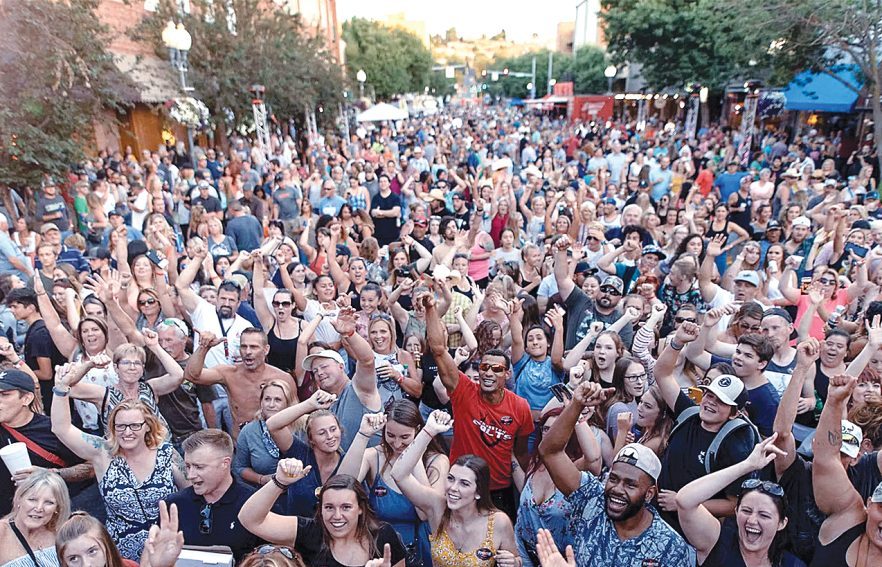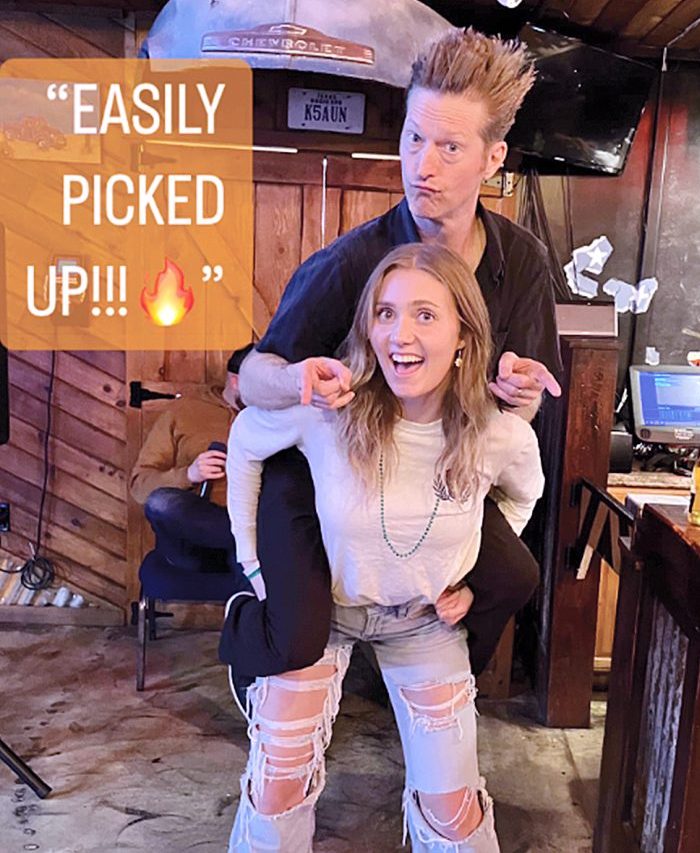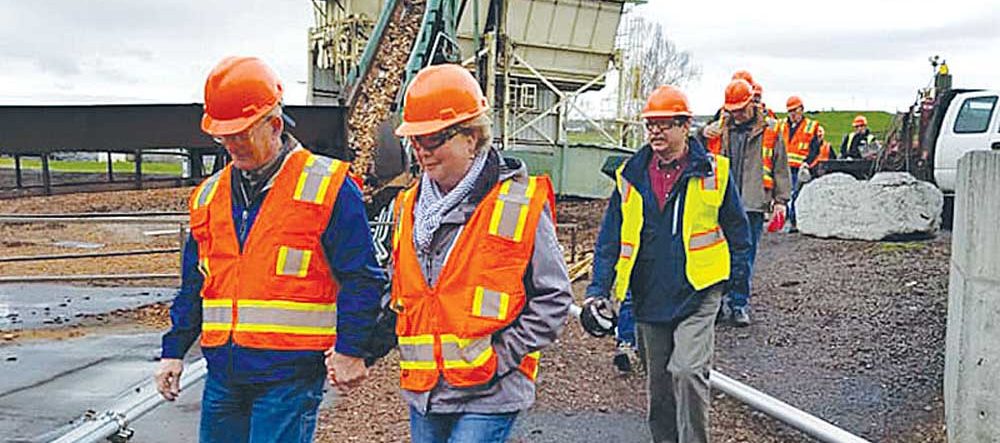Child witnessed Whitman Massacre
Published 9:56 am Tuesday, June 8, 2004
This article appeared in Pioneer Trails, Vol. 17, No. 1, Spring/Summer 1993, and is available in its entirety at Heritage Station Museum.
Mary Elizabeth Marsh was born in Springfield, Ill., on Oct. 8, 1836, to Walter and Louisa Marsh. Soon after her birth her father, a personal friend of Abraham Lincoln, bought a farm on the Sagamon River and moved his wife, son Lucius, and the baby there.
Trending
“We lived there until 1847 when there was a rush for the Oregon territory” Marsh said. “My father sold out in April of 1847 and we started for Oregon, overland on a journey of near 3,000 miles.”
Walter and Louisa’s grandchild, Alba Lyman, accom- panied the family on the trip. Alba’s mother had died before they left for Oregon, and they elected to take him with them.
“A person cannot imagine the trials and hardships that were endured,” Marsh said. “I was so young that it was more of a pleasure trip for me. I can’t remember many of the different places we passed but I do remember Independence Rock. I went up on it and saw a great many names and dates carved upon it. Many names are now obliterated by weather, but it is believed that 40,000 to 50,000 persons put their names on Independence Rock.
“Before we got to Bear River my dear mother took sick and when we reached Soda Springs, she died. We had to bury her there on the lonely plain. No coffin to lay her in, not even a crude box, just wrapped in her bed,” Marsh said.
Louisa’s death made it impossible for the family to keep Alba Lyman, so, for the remainder of the trip, the baby was given to the care of another family.
“We journeyed on until we reached Dr. Whitman’s Missionary Station in October,” Marsh continued. “Father, being tired of travel, concluded to stop there until Spring – then go on to the Willamette Valley. He got employment from the Doctor.”
Trending
Marsh’s brother, Lucius, went on to the Willamette Valley. Mary Elizabeth Marsh was now 11 years old.
This 1847 wagon train carried black measles and dysentery, not necessarily fatal to the immigrants, but devastating to the Indians. Within a few weeks, half of the Cayuse tribe living near the mission were dead or dying. Dr. Whitman tried to do what he could, but he couldn’t save many.
In the total immigration of 1847, there were more than 6,000 people who had come to Oregon, practically doubling the population. Joe Lewis, a half-breed of Indian and French blood, had traveled with the wagon train until Dr. Whitman’s mission (Waiilatpu) when he left to camp with the Cayuse Indians. He convinced the Indians that Dr. Whitman was poisoning them.
“It was on the 29th of November about two o’clock in the afternoon that the Indians broke out and murdered the Doctor and Mrs. Whitman and eight others,” Marsh said. “Six families were living in an adobe house not far from the Doctor’s house. Father and I occupied an upper room where we cooked our meals and slept. He had come in and had his dinner, his last dinner, and had gone to work attending the grist mill. That was the last time I ever saw my poor father.
“I was washing the dishes when I heard the report of a gun. It was the gun that killed Gillian, the tailor. He was doing some sewing when an Indian stood in the door and shot him. At the same time the horrible work was going on outside. I and some others went upstairs where we could look out from a window and see a part of the conflict near the Doctor’s house. Three or four men were butchering a beef there. I saw them engaged with quite a number of Indians. Mr. Kimball was dealing hard with several, he having an axe to fight with. He fought desperately for a while, but they killed him. I saw Mr. Hall chased by an Indian with an uplifted tomahawk (the Indian on a horse) but Mr. Hall made his escape.”
Peter Hall, a carpenter, made his way to Fort Walla where he told William McBean of the tragedy. He was given provisions for the trip to the Willamette Valley to tell his story. Hall was never heard from again. McBean sent word of the massacre to Fort Vancouver after he had investigated further.
“Meanwhile, Mrs. Whitman had barred the doors and windows to keep them out of the house – but they broke in anyway,” Marsh continued. “I saw them break into the house, led by Joe Lewis, the instigator of the trouble. There they finished their bloody work for that day. Mr. Sails (Sales) and Bewely were sick and were not killed that day. A week later they were killed in their beds.
Afterward I saw Bewely laying outside the house with his head almost torn from his body. He laid there all night. All the dead bodies were buried in one grave by the four men who were not killed – Elam Young, and his two sons, and Mr. Smith. When the Indians killed the two sick men, I was so frightened I ran to an Indian for protection, one who claimed to be friendly.
“After the horrible work was done, there were nearly 60 widows and orphans in captivity, expecting anytime to share the same fate of the others, but we were spared, only to endure the fear and suspense. For one month the prisoners were kept well guarded and made to work. One old fellow put me to knitting for him a pair of long-legged socks. I got one nearly made when Governor Ogden of the Hudson Bay Co. came to our relief and bought us from the heathens and took us away.”
Governor Ogden, Chief Factor of the Hudson Bay Co., went to Fort Walla Walla and called the Cayuse Indians to a parley. He ransomed the remaining 57 captives for 50 blankets, 10 guns, 10 fathoms of tobacco, 10 handkerchiefs and a hundred balls of powder. (Oregon Statesman, 1936) For the Spaulding Mission it wasn’t quite as much, and the Nez Perce collected the ransom.
“We went in wagons to Fort Wallula,” Marsh said. “The first day there we were put in batteaux and started down the river. The batteaux were open boats with canvas to spread over the top to keep out the rain. When a head showed up the Governor would holler, ‘Duck that head.’ I for one suffered with the cold for we were scant of clothing.
“When we reached The Dalles, the volunteers were there. My brother was one of them as he had gone down to the Valley. We journeyed on down the Columbia and up the Willamette River to Oregon City. There we were turned loose with thankful hearts that we had escaped the merciless foe. Most of the children had their mothers, but I was entirely alone among strangers, my brother being with the volunteers, so I was left to the charity of the people. You know how an orphan would fare among perfect strangers. They soon are not wanted any longer.
“When we arrived at Oregon City a lady gave me a piece of bread and molasses. I did enjoy it for bread was not plentiful. There was plenty of salmon and sometimes boiled wheat for a change.
“In 1849, my brother went to California, but before he left he found me a home with Mrs. A. L. Lovejoy, who was very careful of my welfare. There I remained until I was married to James F. Cason, son of F. C. Cason, who crossed the plains in ’43.”
A. L. Lovejoy, in whose home Mary Elizabeth resided, was a prominent man in Oregon history. He had stopped at the Whitman Mission during the 1842 immigration and turned back to accompany Dr. Whitman on his famous winter trip to the East. On the 1843 immigration, he had piloted the train part of the way across the plains – the first to come through with wagons. Mr. Lovejoy was also Adjutant General for the provisional government in the Cayuse War.
Lucius Marsh fought in the Cayuse Indian War of 1847-48 as a private. After he left for California, Mary Elizabeth never heard from him again. Alba Lyman, grandchild of Walter and Louisa Marsh and one of the children ransomed, went on to Oregon City and lived there until he died at 17 years of age.
Mary Elizabeth Marsh Cason wrote her memoirs of the massacre in 1907 shortly before her death. At that time she would have been 71 years old.
After Oregon became a territory, the five confessed killers of the people at the Whitman Mission were tried and convicted. They were hanged on June 3, 1850, at Oregon City.
(This article was compiled by Marilyn Terjeson from research done by her daughter-in- law, Jan Peterson Terjeson, about her great-great grandmother, Mary Elizabeth Marsh Cason. The search began when Jan and her husband, Matt, named their son Cason. Other descendants in the area are the granddaughter of Mary Elizabeth, Vivien Cason Elder and her children, Colleen Ployhar, Heppner; Wayne Prock, Pendleton, Jim Prock, Heppner: Janice Cutsforth, Heppner; and Barbara Hale, Pendleton.)








